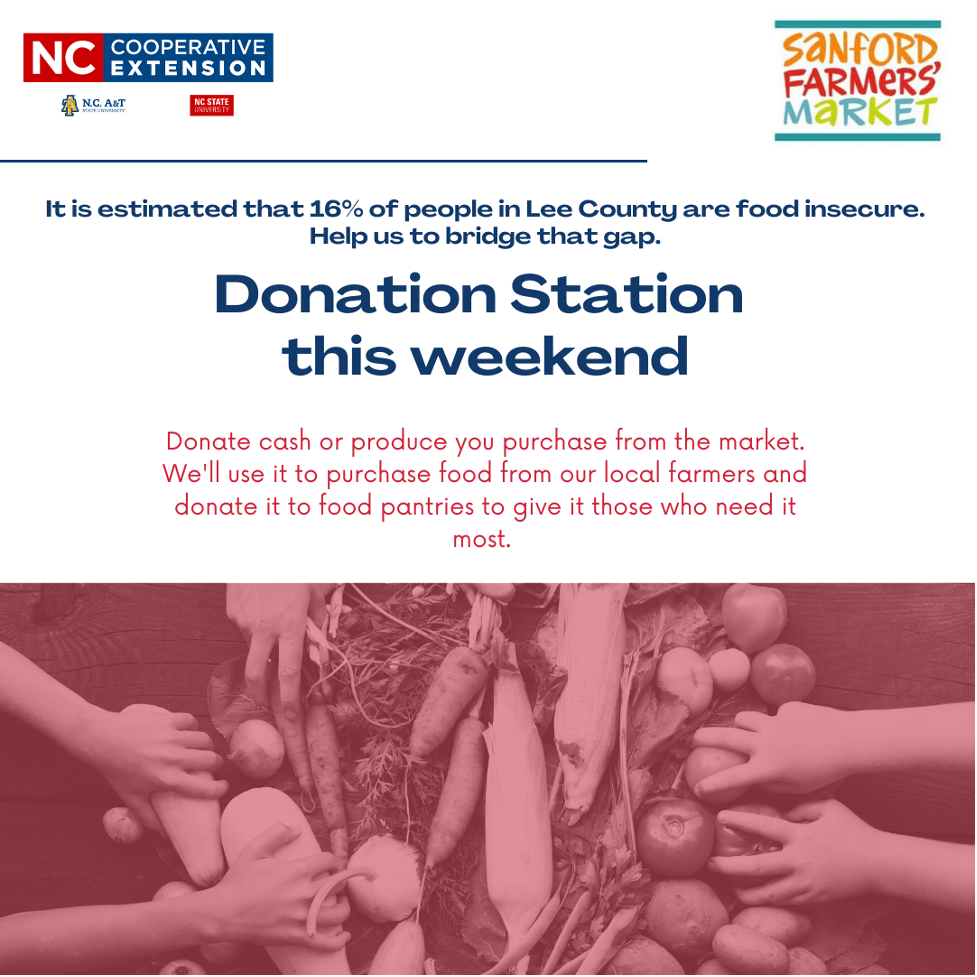September Is Hunger Action Month
go.ncsu.edu/readext?883613
en Español / em Português
El inglés es el idioma de control de esta página. En la medida en que haya algún conflicto entre la traducción al inglés y la traducción, el inglés prevalece.
Al hacer clic en el enlace de traducción se activa un servicio de traducción gratuito para convertir la página al español. Al igual que con cualquier traducción por Internet, la conversión no es sensible al contexto y puede que no traduzca el texto en su significado original. NC State Extension no garantiza la exactitud del texto traducido. Por favor, tenga en cuenta que algunas aplicaciones y/o servicios pueden no funcionar como se espera cuando se traducen.
Português
Inglês é o idioma de controle desta página. Na medida que haja algum conflito entre o texto original em Inglês e a tradução, o Inglês prevalece.
Ao clicar no link de tradução, um serviço gratuito de tradução será ativado para converter a página para o Português. Como em qualquer tradução pela internet, a conversão não é sensivel ao contexto e pode não ocorrer a tradução para o significado orginal. O serviço de Extensão da Carolina do Norte (NC State Extension) não garante a exatidão do texto traduzido. Por favor, observe que algumas funções ou serviços podem não funcionar como esperado após a tradução.
English
English is the controlling language of this page. To the extent there is any conflict between the English text and the translation, English controls.
Clicking on the translation link activates a free translation service to convert the page to Spanish. As with any Internet translation, the conversion is not context-sensitive and may not translate the text to its original meaning. NC State Extension does not guarantee the accuracy of the translated text. Please note that some applications and/or services may not function as expected when translated.
Collapse ▲
September marks Hunger Action Month, a time to bring awareness to food access disparities in our community and to come together to help feed our neighbors who are struggling to put food on the table. According to the most recent estimates from the Food Bank of Central and Eastern North Carolina, approximately 16% of Lee County residents are food insecure, including 22% of children. Fortunately, we have several food relief agencies who help to connect food insecure residents with food, which include the Bread Basket, Christians United Outreach Center, Bread of Life Ministries, and Salvation Army of Lee County. In addition to the efforts of these organizations, the Food Bank of Central and Eastern North Carolina distributed over 1.5 million pounds of food in Lee County between 2020-2021.
To bring awareness to food insecurity in our area and to help contribute healthy and fresh local produce to these community partners, we will be hosting donation stations at the Sanford Farmers’ Market starting this weekend. How donation stations work: market shoppers can choose to donate either produce they purchase at the market or cash at the donation station. Volunteers running the donation station will then use donations to purchase produce and other foods from market vendors. After the market, all produce collected at the donation station will be dropped off or picked up by the food relief agencies to distribute to food insecure residents. We will be offering a donation station to pilot this program at the Sanford Farmers’ Market starting this weekend. We hope to offer donation stations at the market on a more regular basis next year.
Donation stations are one tool in a community’s arsenal to help increase food access, and they are being used by N.C. Cooperative Extension staff and volunteers across the state! Learn more about donation stations.




